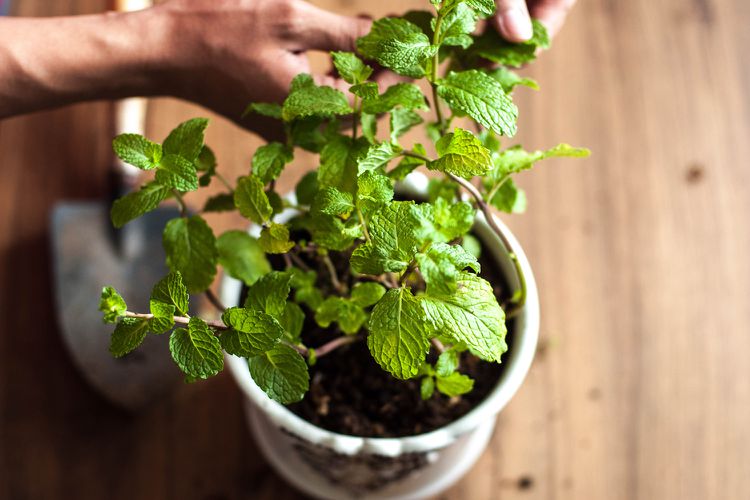8 Tips for Growing Mint Indoors for a Year-Round Supply of Fresh Leaves

Growing mint indoors means you'll have the key ingredient for serving up mojitos, mint juleps, and decadent mint desserts. Mint is one of the easiest and most popular perennial herbs to grow in the garden, but it's also easy to grow indoors. All it takes is a well-lit spot and a little know-how. Whether you want to extend your growing season or simply don't have the space to garden outdoors, these tips will help you create a thriving indoor garden of mint plants.
1. Buy Transplants Instead of Seeds
Using transplants from a garden center will ensure that you start growing mint indoors with an authentic plant that will produce up to your expectations. Mint is unreliable when grown from seed because different varieties often cross-pollinate and leave you with plants that might not have the desired characteristics. Be sure to choose varieties of mint that you may never see at your local grocery store, such as apple mint, chocolate mint, and orange mint. After all, growing unique varieties is one of the benefits of growing your own mint plants.
2. Select a Suitable Container
Once you get your new mint plants home, repot them into a container at least 8 inches deep and one or two sizes larger than the original container. Most herbs do best when planted in pots at least 12 inches across to allow room for root growth. Mint also grows well in hanging planters. Keep in mind that a plant in a porous clay pot needs water more often than one in a plastic or ceramic pot because it will dry out faster. Make sure the container you choose for growing mint indoors has holes in the bottom to allow water to drain out.
If you already have a mint plant growing outdoors in your garden, you can bring it indoors and repot it to extend the growing season. Be sure to relocate your mint indoors before the temperature drops below 40℉ to protect it from cold damage.
3. Use Fresh Potting Mix
Purchase a potting soil mix designed for edible plants—one that allows for good drainage and contains only a small amount of fertilizer, if any. You can also mix your own potting soil from equal parts bagged and sterile compost, perlite, and coarse sand. The mix needs to offer both air space and enough water retention to keep roots healthy. Starting with a fresh, sterile mix when growing mint indoors will help prevent diseases, pests, and weeds from popping up.
4. Keep Mint Consistently Watered
Water your mint plant when the top of its container’s soil feels dry, or about once a week. If there is extra water in the saucers under your pots, empty it out to prevent excessive sogginess in the soil, which can cause root rot. Soil that says too wet can also encourage insect issues such as fungus gnats. On the flipside, mint can tolerate short dry spells, bouncing back quickly if it wilts. But if the plant dries out too much, the edges of the leaves will turn brown and crispy.
5. Provide Plenty of Light
A kitchen windowsill with a southern exposure is usually a good spot for growing mint indoors because it's convenient to reach while cooking and likely to have enough light and air circulation. Rotate the pot about a quarter turn weekly so that all sides of the plant receive four to six hours of bright sunlight. If there's not enough sunlight inside your home, place your mint plant under grow lights for 12 to 14 hours each day.
6. Increase Air Circulation
If you see fungal diseases on your mint plant, such as powdery mildew, that's a sign that the humidity around your plant is too high. Use a small fan when growing mint indoors to keep moist air moving gently around the plants to minimize certain diseases and insect problems that thrive in high humidity.
7. Avoid Temperature Extremes
For the best indoor growing conditions, keep your home's temperatures between 65℉ degrees and 75℉. Avoid growing mint indoors on windowsills with inconsistent temperatures, such as near heating vents or cooking appliances.
8. Harvest Mint Leaves Just Before Bloom
When the plant is at least 3 inches tall, you can begin pinching off mint leaves to use in your favorite recipes for a little minty kick. The flavor is most intense right before the plant blooms. Pinch off any blooms right before they open so the plant will make new buds.